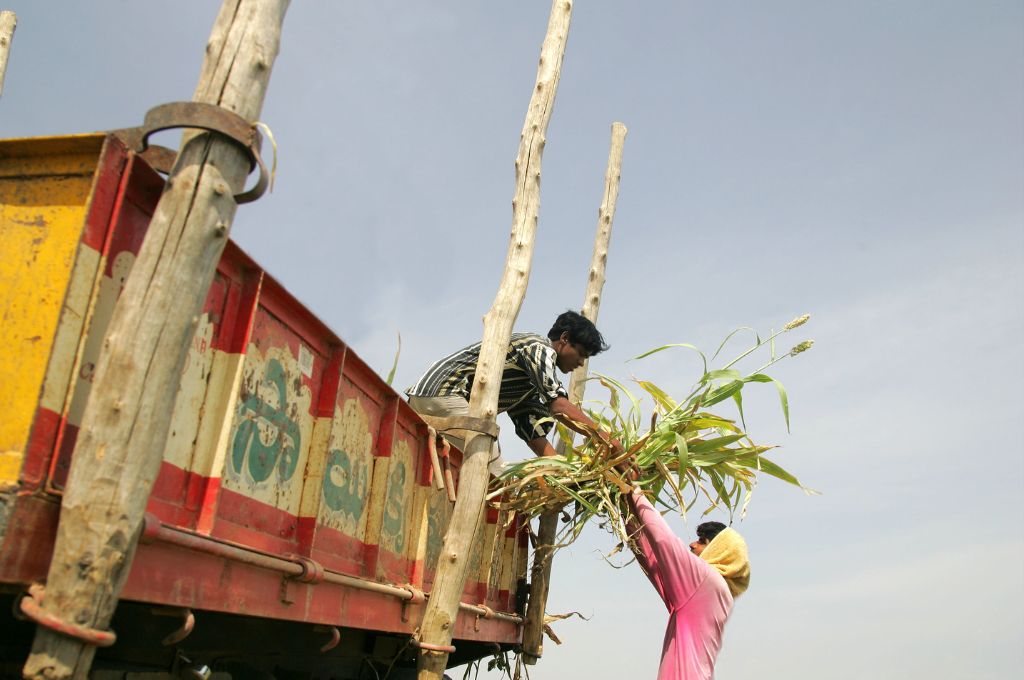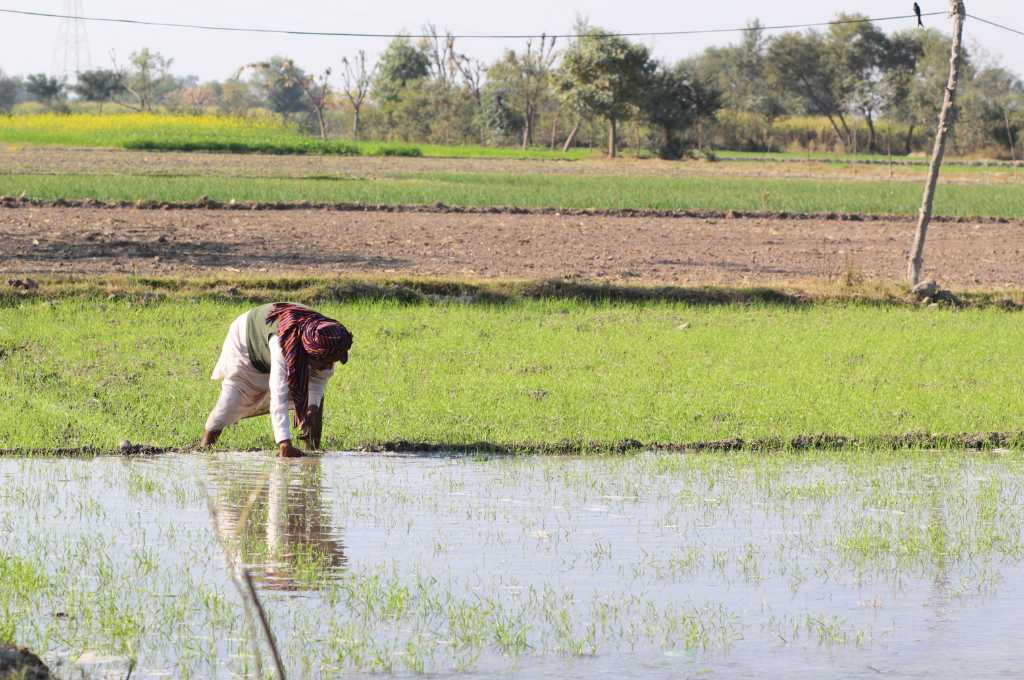Andhra Pradesh (AP), comprising 26 districts, has three agro-ecological regions—the Adivasi belt of the north, the prosperous coastal plains, and the rain-shadow area of Rayalaseema.
North AP, which has hilly terrain and high rainfall, is suitable for commercial crops such as ginger, turmeric, coffee, and black pepper. In coastal AP, known as Annapurna or the land of plentiful food, households can grow three or four crops a year. Farmers in this region focus on commercial crops and use large quantities of pesticides and fertilisers; they are also highly entrepreneurial. Rayalaseema, on the other hand, receives scanty rain, and agriculture here is not a secure profession. A large number of farmers from this region migrate to cities for jobs.
The impact of COVID-19
As with the rest of the country, several migrants in the pockets of Anantapur, Chittoor, Kurnool, and Kadapa, among others, returned to their villages during the pandemic. Mohammad Bhakhtar Vali, regional head at Foundation for Ecological Security (FES)—a nonprofit that works on strengthening and conserving land, forest, and water resources—says everyone worked on MNREGA schemes during the first wave. “It didn’t matter what educational or social background people came from; it didn’t matter what they were doing earlier. Everyone— students, drivers, farmers who had never done MNREGA work before—benefited from the scheme.”
According to Vali, this helped break the social and economic hierarchies in villages for that time. “Since the pandemic had upturned all rules and all livelihoods, no one cared about whether it was ‘good’ work or not. Moreover, since this was a government-driven scheme, people didn’t feel obligated to anyone,” he says.
The surplus labour in the villages also offered an opportunity to bring all cultivable land into agriculture. As there was a shortage of money to invest in agriculture, people worked on some form of barter system—exchanging labour and working on each other’s lands on sowing, transplanting, harvesting, and so on.
The economic profile of the farmer has changed
Farmers who have say two to three acres of land do not rely on farming alone; instead, they have multiple sources of livelihood. They own livestock such as sheep, goats, cows, and buffaloes that provide milk and meat. They also work for daily wages on other people’s farms, and on MNREGA schemes. In essence, a household earns from agriculture, livestock, MNREGA, and other agriculture wage employment. Vali says it is crucial that policymakers understand the changed profile of farmers to help them raise incomes and build sustainable lives.
Farmers realise that doing just agriculture is not viable any more.
How farmers look at food security has also changed. They don’t cultivate just the crops needed to feed their families; instead, they prefer to grow cash crops they can sell in the market. Farmers realise that doing just agriculture is not viable any more, Vali adds. “They need money to pay for their children’s education, their families’ health, and to construct their homes. Everything they do with their land is based on how much income they can generate to realise their aspirations.”
Shaik Anwar, head of AP and Telangana at Azim Premji Foundation, describes a typical scenario. “Usually, farmers who have a small piece of land close to water sources prefer to grow paddy there for their own household consumption. On the rest of the land, they grow one of the commercial crops that suits the local ecology and that they can sell for surplus income. This gives them cash in hand. It’s not much—INR 5,000–7,000 per month per acre—but it allows them to buy other necessities. If a farmer has more land, they will have more income,” he says.
However, a farmer’s ability to do farming viably is also affected by climate change and market linkages.

Climate change is destroying farmer confidence
Rains in AP (as in the rest of the country) have increasingly become erratic. As a result, there is no security of crop and, hence, no food or income security for farmers.
For instance, Anantapur district used to be the second most drought-prone district in the country and would receive only 550 m rain a year. In the past two years, however, it has received excellent rainfall and every tank in its villages has surplus water. Contrary to popular belief, the impact of these good rains has not resulted in better crop yields or incomes. The farmers’ confidence in agriculture is dipping. Anwar says, “They can no longer predict when to sow or what unseasonal rains will do to their crops; the rainfall and cropping patterns no longer match and the risk is too high.” Vali says, “Losing a crop means losing a season; losing a season means losing a year; losing a year means losing their livelihood.”
Despite this, Vali adds, most farmers are using their experience and expertise, their traditional and new knowledge—everything in their capacity—to produce better. But they also know that their fortunes are decided by the market, over which too they have no control.
Markets are not farmer-friendly
There is a huge variation in the money the farmer receives and the prices at retail shops, mandis, and farm gates. Vali says that the younger farmers see the final prices at shops and malls. “They are looking to grow crops that urban customers consume—millets, fruits, and vegetables. But the difference between the retail price and what the farmer earns is so big that they find it frustrating. For instance, in 2019, when millets were selling at INR 82 per kg in the malls, farmers were receiving only INR 22 per kg.”
He reiterates how the market continues to be exploitative. “When a cyclone makes it difficult for farmers to pluck fruits or vegetables, we can expect a jump in prices for the end consumer. But even when there is no cyclone, prices are high in city markets. Farmers don’t get the benefit of these prices. This puzzles them—they believe their incomes are left completely to luck.” Because of the way farmer producer organisations (FPOs) are structured, they have no financial clout in the market and are unable to help farmer members bridge this vast gap.
Farmers are moving to natural farming
Farmers in AP are seeking to improve the things they do have control over—soil, crop quality, and yields. Through the years, they put in increasingly stronger doses of chemical fertilisers and pesticides and used the highest quality seeds for better yields. This didn’t generate more income, but the fertilisers and pesticides polluted the soil to the extent that it lost its regenerative capacity.
Several farmers are gradually migrating to natural farming methods.
Given this deterioration, several farmers are gradually migrating to natural farming (NF) methods. The AP government has been promoting NF since 2016. With support from Azim Premji Foundation, it set up an independent institute—the Rythu Sadhikara Samstha (RySS). In six years, RySS has worked with 6.3 lakh farmers on NF (the state has an estimated 60 lakh farmers). Given the focus on NF in the state, several other nonprofits are also working on the shift from fertiliser- and chemical-pesticide-centric farming to natural farming and non-chemical approaches.
Organisations such as RySS, APF, WASSAN, Centre for Sustainable Agriculture, Jattu Trust, and Accion Fraterna Ecology Centre invest time in helping farmers make this transition and in building their confidence.
According to Vali, there are three categories of farmers. The first are instantly attracted to the idea and start immediately. The second will not change their mindset even if you show them evidence. “The third group is the one with potential—if they see that the new model can benefit them, they are willing to try it. They still have some fear because it is different from what they are used to,” he says.
Anwar says that in the past five years, he has seen that farmers start with a small area to grow crops. “Over time, as they gain confidence, they expand these practices to cover all their land.”
He adds, “A substantial proportion of farmers pick several NF practices, thereby reducing pesticide usage significantly. They do, however, retain the option of applying chemicals at the last minute. We consider them partial converts. A second category don’t apply any chemical fertilisers or pesticides. We call them seed-to-seed farmers. Half of the six lakh farmers who practice NF through RySS fall in this category. Many them are from north coastal AP, which has a high Adivasi population.”
Some challenges remain
1. Lack of ownership and confidence
Several large landowners in coastal AP have moved away from agriculture and have been leasing land mostly through informal mechanisms. There is a lot of tenancy cropping among smaller, more marginalised farmers in these areas. Since it is not their land, their sense of ownership is limited. “If you are a farmer who owns the land and lives off it, you will think of soil health, of keeping the land sustainable. There should be new ways of engagement between the landowning community and tenant farmers in order to improve soil health,” explains Anwar.
2. Lack of imagination
The bigger problem is of imagination. The general refrain among farmers is that they have to invest a lot upfront for organic agriculture and there will be reduction in yields. Studies have shown that there is no yield penalty for switching to NF. However, farmers continue to think of farming as high investment and risk.
For traditional farming, they need to borrow money to pay for market inputs. For instance, for one tomato crop, a farmer has to invest INR 1.5 lakh per acre. They need to pay for seeds, fertilisers, and pesticides. Wages have also increased, and there is competition among farmers for this labour. To counter these challenges, many farmers are shifting from paddy and cereals to horticulture. “They are choosing to grow fruits as these are less labour-intensive and require less water,” Vali says.
Anwar says that, earlier, farmers did not know it was possible to do more with less. “When they don’t have to invest large amounts upfront in NF, their dependency on moneylenders also decreases.”
Crop security is central to the NF model. “We don’t want farmers to depend on only one crop. They should have a diversified portfolio. We design crop patterns in such a way that harvest income is steady for almost 10 months of the year. This, however, works best for small farmers,” says Anwar.
The next generation is not interested in farming
According to Vali, aspirations around education, health, housing, and celebrations are growing, and income from farming isn’t enough to pay for these. The next generation isn’t interested in agriculture because they don’t believe it has a future.
The youth is not interested in farming, particularly in tribal areas.
Anwar also says that the youth is not interested in farming, particularly in tribal areas. “They don’t want to do agriculture like their parents; their education is not enough to get them a decent job since they are unable to compete with urban youth in terms of market skills.”
However, he believes that there are entrepreneurial opportunities to be built around sustainable farming. NF, at scale, sets up demand for new inputs such as biopesticides, natural soil stimulants, value addition, and marketing. As the number of NF farmers increases, the demand for these inputs will provide an opportunity for local youth to offer these products and services.
Saloni Meghani and Shreya Adhikari have contributed to this article.
—






